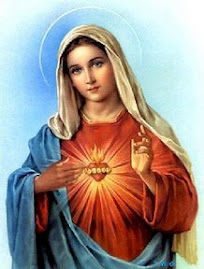
Bertin was born around 615 near Constance in France. He spent his childhood studying at the Abbey of Luxeil, France. The monks of this abbey followed the austere rule of St. Columban. Though, being only a student, Bertin was not obliged to follow this rule, he chose to do so anyway and was thus prepared when, upon reaching adulthood, he entered the order.
In 639 Bertin led two other monks in joining his relative, Bishop St. Omer, in the region of Pas-de-Calais in northern France. Their's was a missionary journey, to evangelize to the heathens of this desolate region.
The evangelization did not initially proceed very well. However, the monks took advantage of the opportunity to establish a monastery, which they placed under the patronage of St. Mommolin. Bertin was appointed abbot, a position in which he served until his death.
The new monastery, and the example of the holy monks, served as a beacon for the pagans and soon brought many to the faith. Bertin's example was especially inspiring and he soon had one hundred and fifty monks in his care. Twenty-two of these monks have since been canonized.
Bertin went on frequent missionary trips along with sending other monks on similar trips to England and other parts of France. When, due to old age, he was no longer able to make these trips, Bertin devoted his time to prayer and fasting, preparing himself for a holy death. He passed away of natural causes in 709.
 Today is the feast of the birth of the Blessed Mother!!!!! In the eloquent words of Fr. Conrad "Happy your mother's birthday!"
Today is the feast of the birth of the Blessed Mother!!!!! In the eloquent words of Fr. Conrad "Happy your mother's birthday!"















